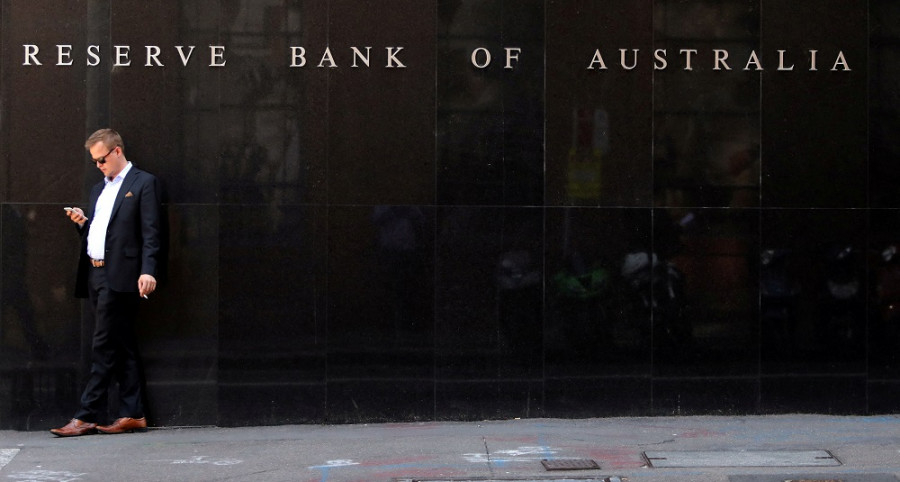The AUD/USD pair froze in anticipation of the Reserve Bank of Australia's March meeting, the results of which will be announced during the Asian session on Tuesday. The intrigue here will remain until the last minute.
The main danger for the aussie
Last week, important macro data reflected Australia's weak Q4 GDP growth and a slowdown in January inflation. These factors could have a significant impact on the stance of the RBA members. Many currency strategists (MUFG Bank in particular) are warning their clients that the central bank is likely to soften its rhetoric. However, such assumptions might play a cruel joke on the AUD/USD bears if the RBA keeps its warlike stance. There is a possibility of such a scenario, given RBA Governor Philip Lowe's determination in the fight against inflation.
The uncertainty is weighing on AUD/USD traders, both bulls and bears. Therefore, the pair is actually stagnant for the second week, waiting for the RBA's verdict.

The main risk for the aussie is the RBA softening its stance. Before the previous - February meeting - there was no consensus in the market concerning further actions of the Australian central bank. Some experts assumed a conditionally dovish scenario, according to which the central bank will announce another rate hike in March, but will question the next steps in this direction. Other analysts forecasted a more hawkish scenario, according to which the central bank would declare its commitment to a hawkish course, without announcing any timeframes.
As a result, the RBA implemented the hawkish scenario, providing support for the Australian currency. The central bank increased the rate by 25 points and said it expects further interest rate hikes "in the coming months".
But take note that in the text of the accompanying statement, the central bank indicated that the pace and duration of monetary policy tightening would "directly depend on incoming data and an assessment of inflation and labor market prospects". This is a rather streamlined phrase, which suggests that the RBA "tied" its further decisions to the dynamics of inflation and the labor market. And this circumstance allows us to assume that by the results of the March meeting, the RBA's mood will soften noticeably.
Macro data in the red
The Consumer Price Index in Australia fell quite sharply in January, to 7.4%, while the forecast was for a decline to 8.1%. The slowdown in inflation was due to weak growth in fuel prices as well as food prices.
The other major release last week was disappointing as well. It became known that the Australian economy grew by only 0.5% in quarterly terms in the fourth quarter of 2022, below expectations (0.8% q/q) and below the revised 0.7% q/q in the third quarter of last year.
Prior to that, key labor market data were released, which were also in the red. The unemployment rate in Australia rose to 3.7%, and the growth rate of the number of employed people was again in the negative area (instead of rising by 20,000, it fell by 11,500).
Such information flow is sure to have a corresponding impact on the RBA. In my opinion, the tone of the rhetoric of the accompanying statement will be considerably softened, and Lowe will be more careful in his wording. In February, his remarks were very straightforward - he said that the central bank would need to raise the interest rate further in the coming months "to ensure that inflation returns to the target level".
But given recent trends, we can assume that Lowe will eliminate any specifics from his rhetoric, saying that all future decisions by the RBA regarding the interest rate will be made on the basis of incoming data. Such a message is likely to be interpreted against the Australian dollar in the AUD/USD pair. But if the RBA maintains its hawkish "no matter what" attitude, the AUD/USD will shoot up by at least a figure, to the 69th limit.
Conclusions
Many fundamental indirect signs suggest that the RBA will soften its rhetoric at the March meeting and refrain from any specific forecasts about further prospects for monetary tightening.
Even though this is somewhat of a "baseline" scenario for the March meeting, its realization will put pressure on the AUD/USD pair: in that case, it might test the support level of 0.6650, which corresponds to the bottom line of the Bollinger Bands indicator on the daily chart. If the RBA keeps its spirits up and announces some more hikes similar to the February meeting, the aussie will strengthen its positions in the whole market, and might jump to 0.6880 (the bottom line of the Kumo cloud on the daily chart).
The intrigue remains, so it would be better to take a wait-and-see attitude.
The material has been provided by InstaForex Company - www.instaforex.comfrom Forex analysis review https://ift.tt/4hSalW3
via IFTTT
